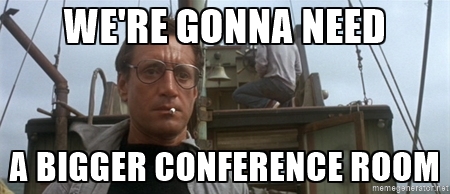The FemtoConf 2018 Notes and recaps can be found on the central hub page.
Title: Mental Health Superpowers – self-reflection, relaxation, and connection for the entrepreneur
Website: ZenFounder.com
Twitter: @ZenFounder
The Entrepreneur Life
- No one else is writing your paycheck
- You take what’s inside you, put it out into the world and make money
- Really high highs and really low lows ==> emotional rollercoaster
Why did you choose this path?
- 70% did it because of freedom
- 40% creativity
- 30% more money
- 40% terrible bosses
- There are some great upsides
- A lot of “internet marketers” are selling the dream and giving the impression that you are failing if you’re not killing it
- Downsides:
- Isolation
- Anxiety
- Burnout
- Failed relationships
- Sleepless nights
- Becoming obsolete
- Instability
- Self-doubt
- Failure
- Selling yourself over and over and over again
- ==> The psychological price of entrepreneurship
- We need to pay attention to our well-being
- Your work depends on YOU
Burnout
- Z73.0 Burn-out state of vital exhaustion
- Physical & emotional exhaustion
- not having any energy
- no spark
- Cynicism & detachment
- You don’t care anymore
- Ineffectiveness & lack of accomplishment
- No relation to reality
- You feel like you’re not moving the needle
- Physical & emotional exhaustion
- Burnout has the power to change the function, structure, and chemistry of our brains
- 30-40% of attendees feel they have experienced burnout
- Burnout is caused by:
- Not enough social support
- Lack of clear, meaningful goals
- Too much work (multi-tasking – great book: “Deep Work”)
- Few observable or rewarded successes
- Limited control over work
- A mismatch between what we think is important and the demands of our work day
- constant interruptions
- conflicting goals (family vs. business)
Founder Superpowers
- #1: Breathe
- Breathe deep into your belly
- Sit relaxed, place a hand on the belly button, inhale & exhale through the nose, try to move your hand
- 5 deep breaths (5 seconds in, 5 seconds out) are enough to start calming you down and push anxiety away
- #1b: Sleep
- sleep is the most important way for our brains to reset
- Benefits:
- Improve memory
- Improve concentration
- decrease excessive eating
- improve mood
- build immunity
- decrease mistakes
- improve productivity
- extend life
- #2: Body
- stand up straight and stretch your body for 2-5 minutes
- If you battle your body, you will lose.
- #3: Brain
- Add some silliness to the thoughts that frighten you and put it on a shelf
- biggest protective factor: friendships & connection


Recent Comments